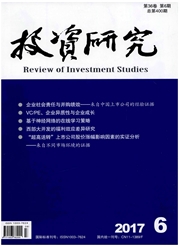

 中文摘要:
中文摘要:
In this article, we use the unrestricted two-regime autoregressive threshold model to test both nonlinearity and stationarity of China’s real exchange rate against its Hong Kong and Macau special administrative regions(SARs). Our main finding is that China’s real exchange rate is neither linear nor stationary, indicating that the purchasing power parity does not hold between China Mainland and its two SARs, which implies, to certain extent, the three economies may not meet the condition of constituting an optimal currency area.更多还原
 英文摘要:
英文摘要:
In this article, we use the unrestricted two-regime autoregressive threshold model to test both nonlinearity and stationarity of China's real exchange rate against its Hong Kong and Macau special administrative regions(SARs). Our main finding is that China's real exchange rate is neither linear nor stationary, indicating that the purchasing power parity does not hold between China Mainland and its two SARs, which implies, to certain extent, the three economies may not meet the condition of constituting an optimal currency area.
 同期刊论文项目
同期刊论文项目
 同项目期刊论文
同项目期刊论文
 期刊信息
期刊信息
